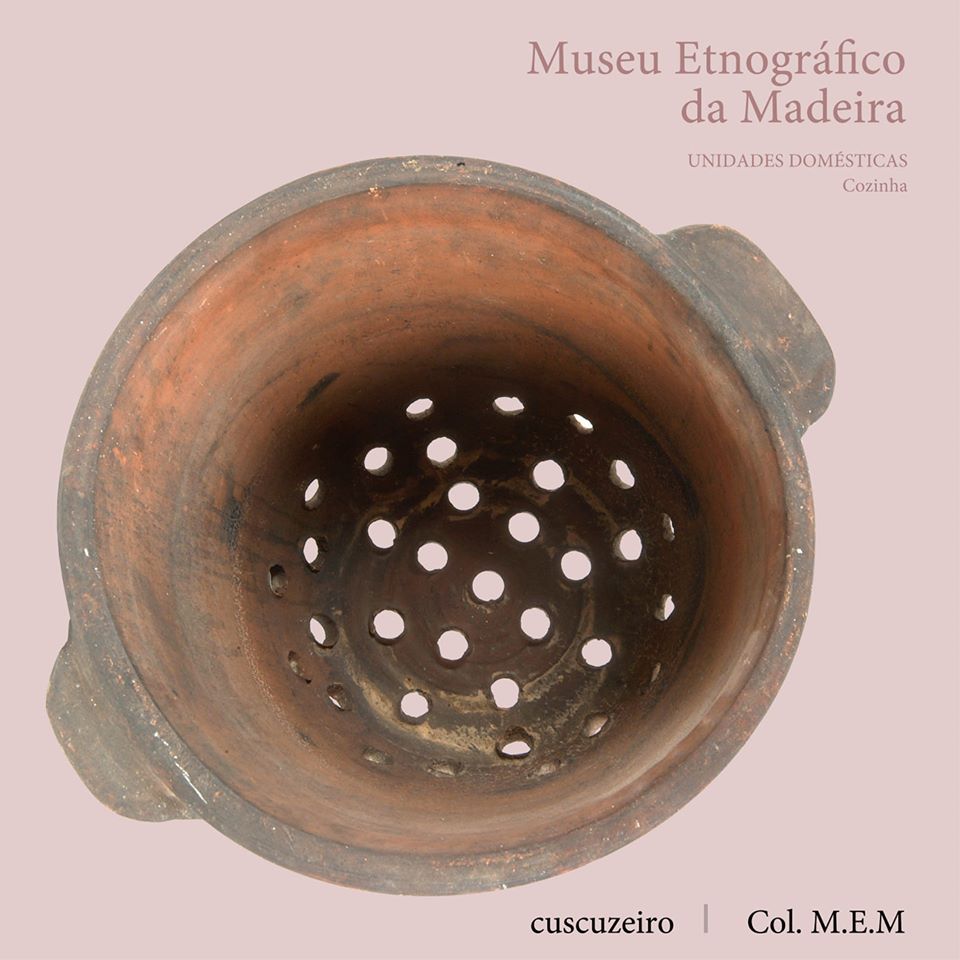Couscous came to the Iberian Peninsula through the Muslims and was said to have been introduced to Madeira by slaves or by the first settlers.
Cooked with wheat flour, couscous can be eaten while still hot. For conservation purposes, the couscous is hand-crumbled, after cooling, to separate it into small grains and dried in the sun for about three days. In winter, drying takes place inside the house. Finally, it is stored in cotton or tow (linen) bags, although the use of plastic bags is more common today.
The couscoussier is a clay pot with a semi-oval bottom, drilled with small holes, used to steam the couscous.
After being mashed and granulated, the couscous is cooked.
Briefly, a pan is filled with water up to a third of its height to prevent it from reaching the couscous when boiling. At the bottom, small fragments of broken crockery or snail shells are placed, the tinkling of which indicates that water is boiling.
To avoid heat loss, a dough is placed at the junction between the pan and the couscoussier. This dough can be made with pollard (coarse wheat flour), bran or boiled sweet potatoes.
At the bottom of the couscoussier, two cross-shaped sticks are placed under the towel on which the couscous will be cooked, using, for this purpose, tendrils (bean stalk) or any odourless dry straw, so that the water vapour can circulate. The couscous is then poured into the couscoussier and, with the help of a wooden spoon, some holes are made to insert savoury branches.
It is covered with the ends of the towel and a blanket over it. This container is still covered with a clay bowl or a wooden top. The pan is then placed on the stove and, after the water boils (signalled by the tinkling of the shards or shells), it is left to cook over low heat for about an hour and a half.
The Collections of the Madeira Ethnographic Museum
Household Items: Couscoussier
Credits: Madeira Ethnographic Museum


